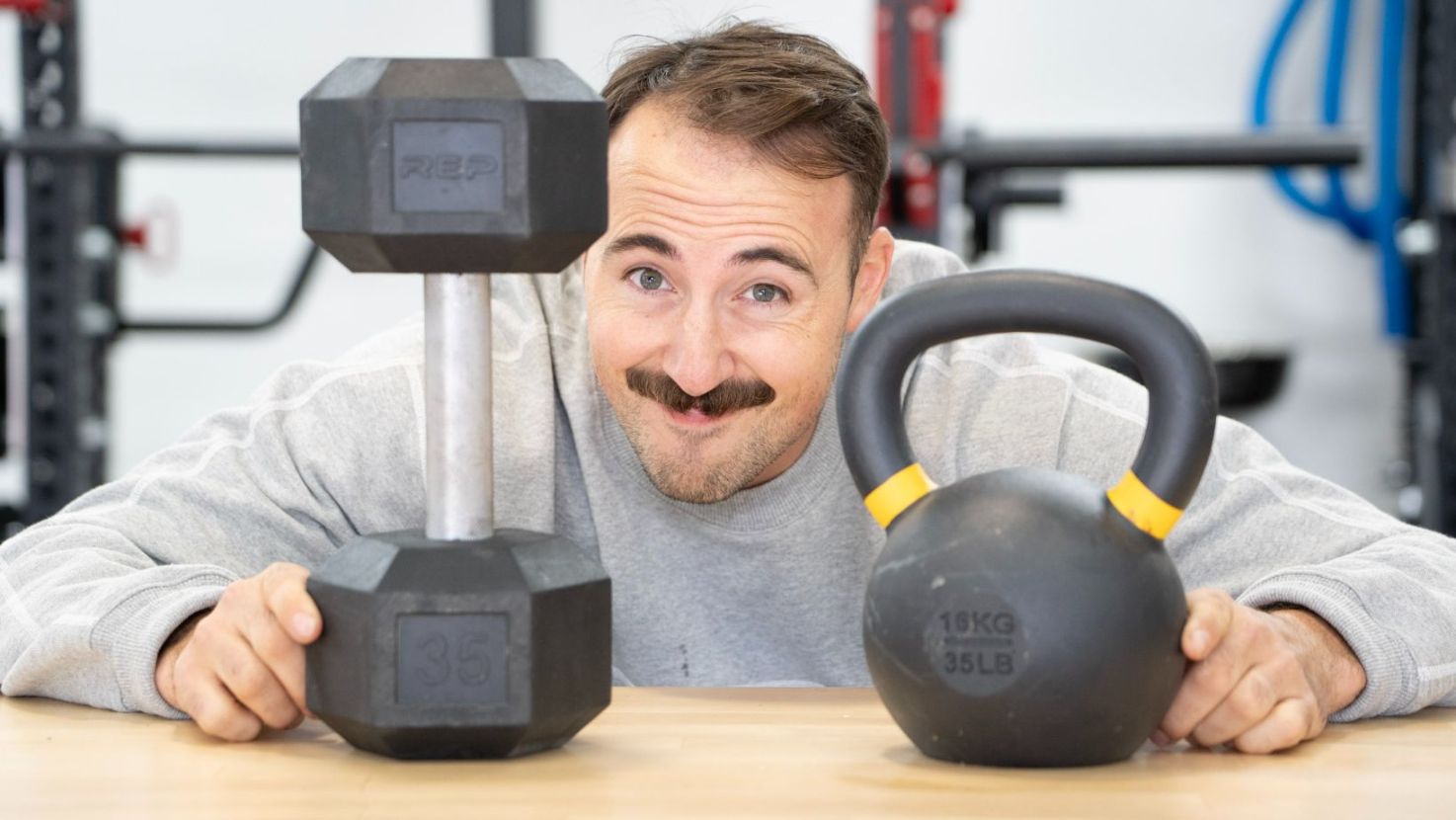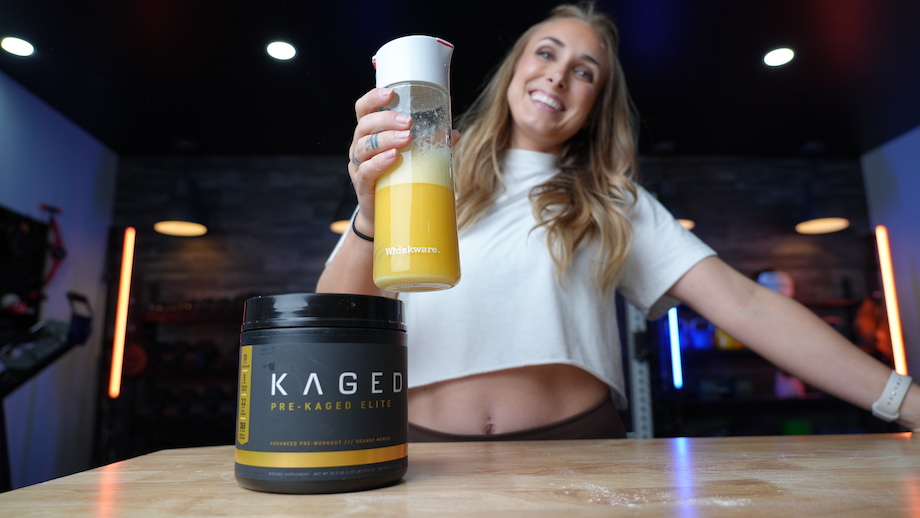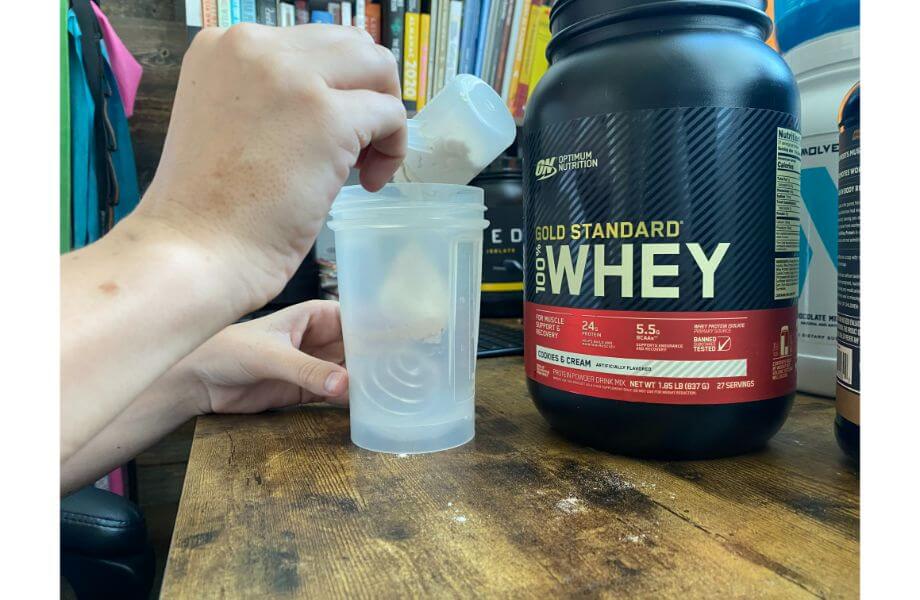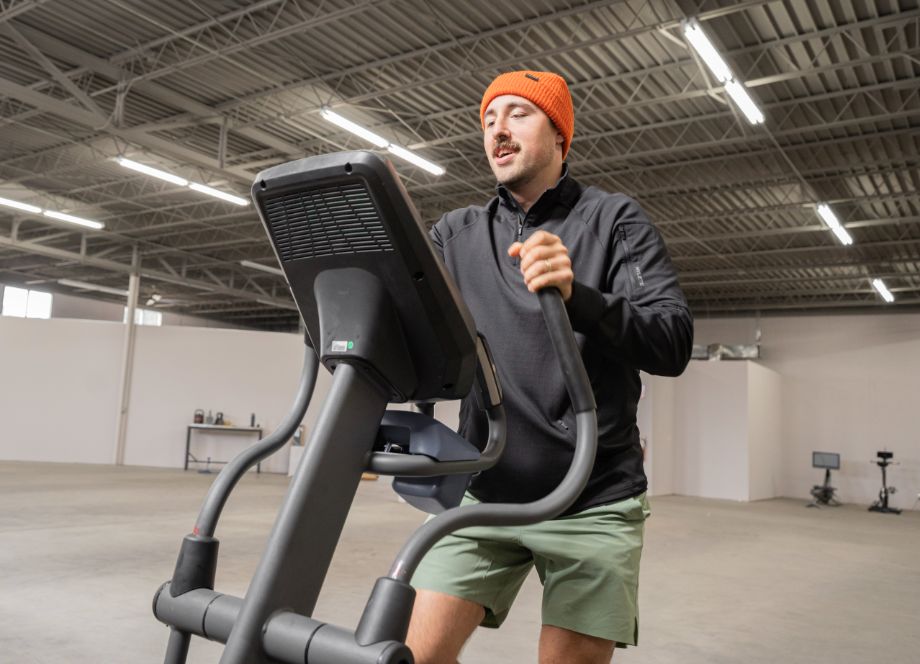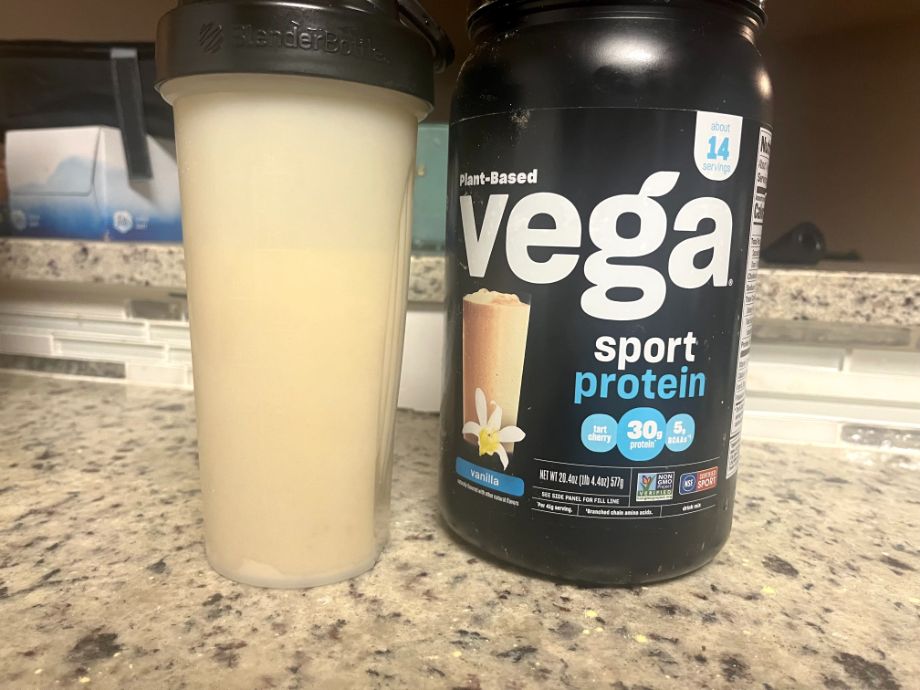Dumbbells vs. kettlebells is one of the longest-standing debates in the strength training community, yet there doesn’t seem to be a clear-cut answer as to which one is better. Perhaps that’s because one isn’t necessarily better than the other…at least, that’s what we think.
Dumbbells are the better-known piece of fitness equipment, and everyone from beginners to professional bodybuilders (likely) knows how to use them to build muscle and strength. Kettlebells, on the other hand, are often used as an easy way to get your resistance training and cardio completed at the same time.
Which, then, is the better choice for your home gym? Well, it’s much like apples vs. oranges—they’re both great for you, but ultimately, it’s going to come down to your preference. Remember, too, that preferences may change from time to time depending on your fitness goals.
Still up in the air as to which is the right fit for your training space? Don’t worry. We’ll dive a bit deeper into these two free weights to give you an idea of how they might benefit your weight training.
Why You Should Trust Us
Our team is filled with people who live and breathe everything fitness, including certified personal trainers, strength and conditioning specialists, gym owners, and even an Olympian.
Fitness isn’t just our job; it’s our passion. When we’re not writing about the best cross-training shoes or best adjustable dumbbells, we’re putting them to the (literal) test to give you our honest thoughts about them.
Benefits of Dumbbells
It’s a good idea to understand why some people might prefer dumbbells over kettlebells, and vice versa. For that, we need to understand what’s so appealing about them.
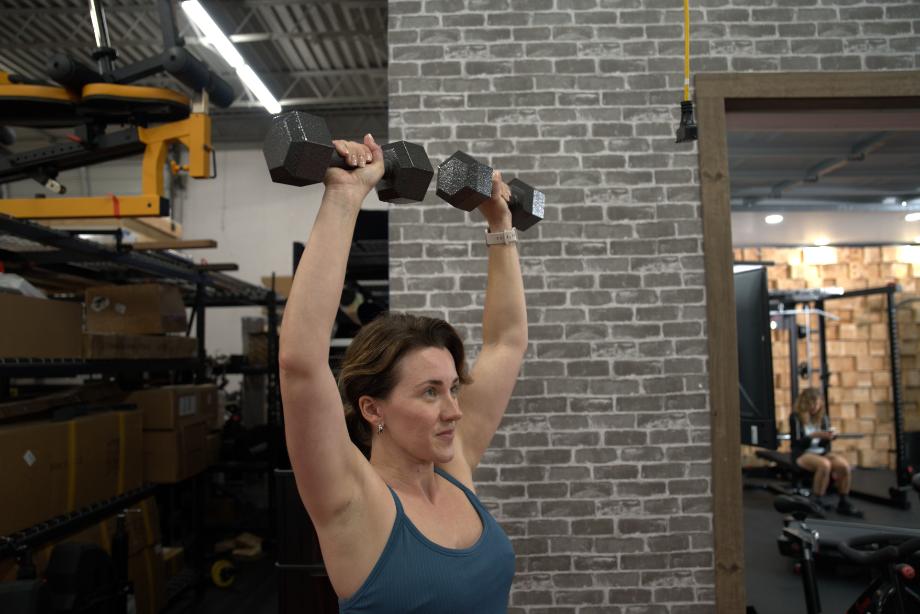
Dumbbells are most commonly used for training the upper body (looking at you, bicep curls), but if that’s the extent of your experience with them, you’re missing out. They can be effective for lower-body training via lunges or squats, as well as cardio in the form of carries.
Aside from their versatility, here are some additional perks that can come from adding a sturdy set of dumbbells to your repertoire:
Familiarity
As we mentioned before, dumbbells are widely recognizable, even by people who don’t consider themselves fitness enthusiasts. After all, we’re talking about a fitness accessory that dates back to the Olympic Games. Naturally, these free weights have seen some evolutions (much like our training preferences) but the general use and design remains intact across the dumbbells of current times.
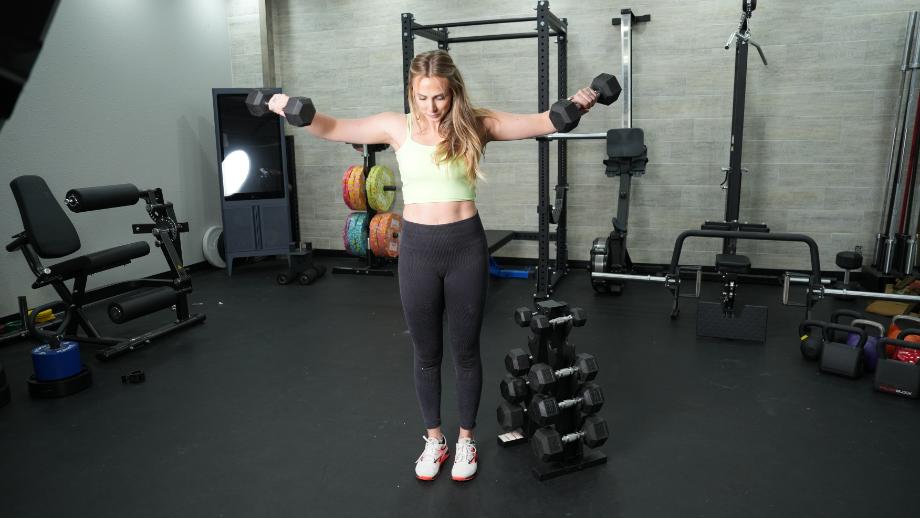
All this to say, dumbbells are a familiar piece of the fitness puzzle similar to the best treadmills and squat racks. A familiar piece of fitness equipment can instill a sense of comfort, too, making for fewer barriers to entry with training. People sometimes hesitate to start working out because they’re intimidated by the equipment and aren’t sure how to use it. So, the familiarity with dumbbells can help break that barrier and make lifting more approachable.
Sure, you’re likely to need some tweaks and corrections as you begin your fitness journey, but adapting your curl or row form can be an easier pill to swallow than digesting the complexities of a functional trainer or oblong strength tool.
Improved Muscle Activation and Stability
If you were to picture a dumbbell-oriented exercise, you’d likely first conjure images of a bicep curl or shoulder press. While this isolation exercises—targeting a singular muscle group—are bonafide standouts in dumbbell training, studies suggest these free weights could be just as beneficial in compound movements, too.
Dumbbell chest presses have been found to recruit more muscle1 than the standard barbell or Smith machine bench press. In other words, more muscle fibers are activated when doing a dumbbell chest press. Researchers conducted electromyographic tests (a method for assessing the electrical activity of skeletal muscle) on participants who performed all three moves. The results? The lifters performed more dumbbell chest press reps, leading to greater muscle development, and there was significantly more biceps activation. This has been demonstrated in multiple studies2 involving different athletes, as well.
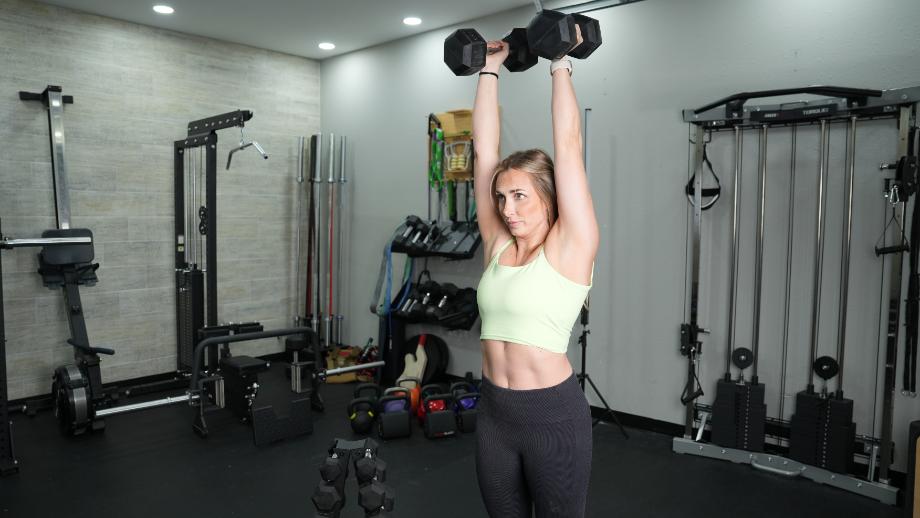
This is because a barbell’s weight is steadier than a dumbbell’s, as the load is more evenly distributed and your hands are in a fixed position. As such, you don’t need to worry as much about controlling two independent weight totals across each arm. This is why someone who can bench press 300 pounds won’t necessarily be able to press two 150-pound dumbbells (yes, those exist).
RELATED: Best Olympic Barbells
Dumbbell exercises often require greater balance and stability to prevent your arms from shaking like leaves. You may not be able to lift as much pure weight, at first, but you’ll be working plenty of smaller stabilizing muscles in the process, which can lead to improved strength and balance.
These perks are why powerlifters and strongmen often utilize dumbbells to pinpoint weak areas in their arms and strengthen their stabilizer muscles. Stronger stabilizer muscles mean they’ll be able to hold heavier weights for longer periods of time—a key skill to have in these respective strength sports.
Reduced Injury Risk
You can injure yourself with just about any piece of equipment if you don’t know how to use it properly, but dumbbells are probably your safest bet—next to machines—to reduce your injury risk.
Take the aforementioned bench press vs. chest press example. If you’re struggling to get the weight up with a barbell, there’s a risk of dropping it on yourself (assuming you’re not using a spotter, which you should be), potentially leading to serious injury.
With a dumbbell chest press, however, the weights aren’t directly above your chest or face, so if you can’t finish the rep, you can dump them to side with greater ease. They’re also generally easier to grip than kettlebells, which have a thicker handle, so there’s less chance of you flinging them around the gym after an apparent grip miscue.
Beyond that, dumbbell exercises can strengthen your stabilizing muscles and reduce imbalances. Having uniform strength across your entire frame can be helpful in preventing injuries in other activities, and boosted stabilizers can be effective when looking to control your reps and sets during the rest of your own programmed workouts.
Shorter Learning Curve
Dumbbells are often used to add variety to common exercises such as bench presses, rows, overhead presses, biceps curls, and more. Even those new to lifting are likely somewhat familiar with how these movements look, so toggling them to suit these free weights should be easier than adapting your training to support other equipment like resistance bands or kettlebells.
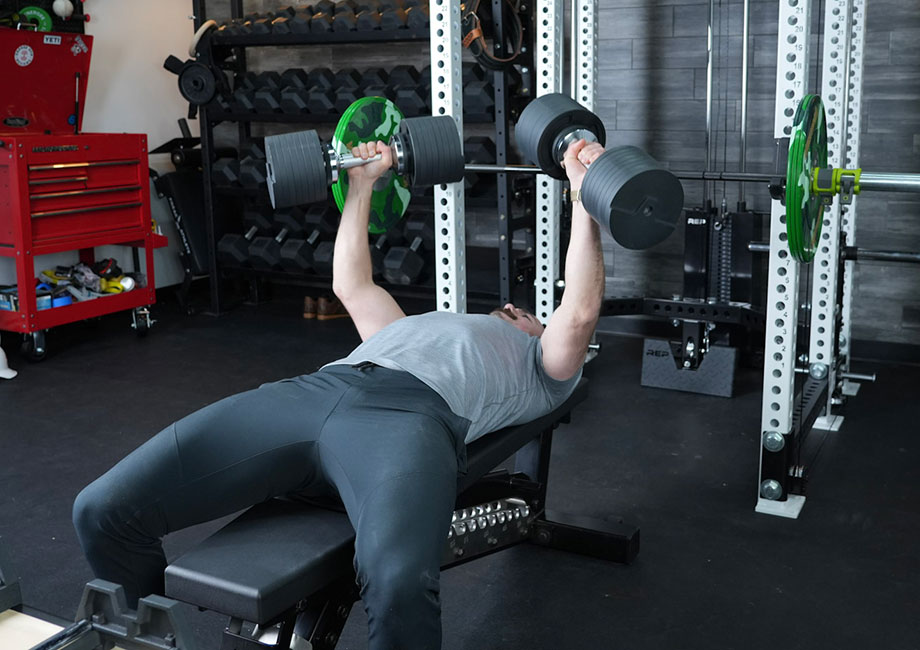
Benefits of Kettlebells
It goes without saying, but kettlebell exercises offer much of the same benefits that can come from dumbbell training. They help strengthen stabilizer muscles, correct imbalances, and can make you stronger to help you lift heavier weights. Kettlebell swings are just the tip of the iceberg when it comes to these versatile free weights—there are countless other exercises that can be programmed into your regimen.
With the best kettlebells becoming more and more popular every year, let’s take a look at some of the reasons why they’re taking the fitness world by storm:
More Bang for Your Buck
If you’re tight on time and need a full-body workout in just a few minutes, or you lack space and need versatile home gym essentials, kettlebells could be the answer to your problem. In fact, Russian strongmen created these cannonball-shaped weights to work on strength, flexibility, and endurance simultaneously. Their versatility is still beloved by those in the bodybuilding and CrossFit communities today.
With kettlebells, you’ll be able to improve your conditioning with the added benefit of resistance training because you’re lifting heavy weights. Movements like kettlebell swings and cleans can also help you develop flexibility and balance.
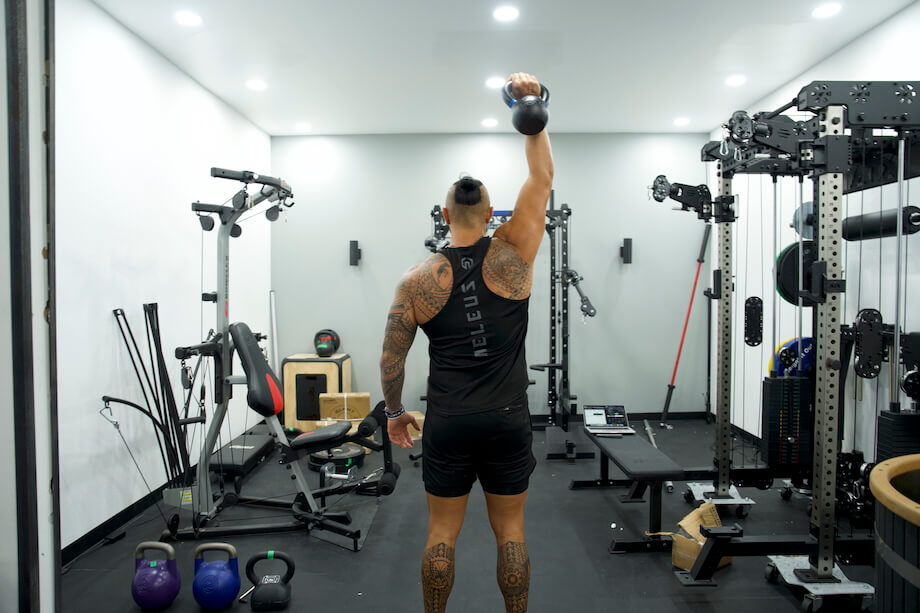
Kettlebell training is also a great way to achieve a full-body workout, as many moves such as the goblet squat and Turkish get-up require you to use your upper and lower body simultaneously.
Full-body workouts are great because you can shorten the length of your workouts—as well as how often you work out during the week—since you’re hitting every part of your body in one go.
Helps You Get a Grip (Strength)
Think about how many things you have to hold onto throughout your day, from a loaded barbell to your grocery bags. There are tons of exercises dedicated to increasing your grip strength, which can help ensure you won’t drop the bar when you’re going for that next PR, and many of them can be done with a kettlebell.
If you’ve ever looked at or put your hands on a kettlebell handle, you’re likely to have noticed a thicker handle design that what you’d commonly see on dumbbells. This added heft can pose a unique challenge in training, calling for your hands to work tirelessly to effectively control the free weights throughout your reps. Eventually, this intensity can lend itself to stronger fingers and mitts.
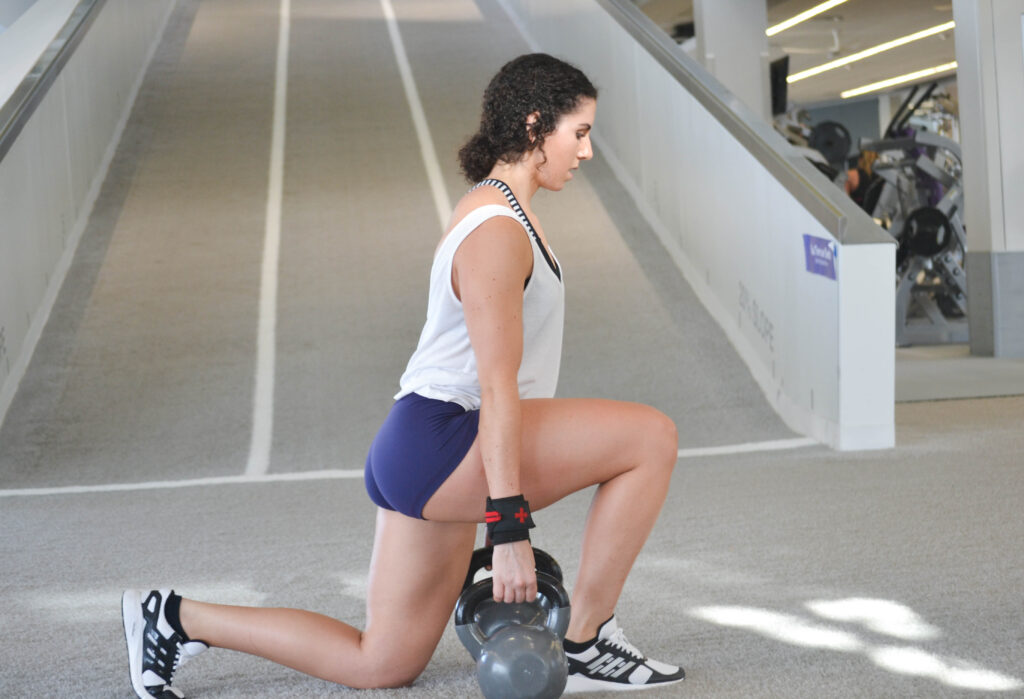
Another aspect of the kettlebell that can help build grip strength is its smooth handle. This is in contrast to the knurling you find on some dumbbells and barbells that’s intentionally positioned to provide more control. A smooth handle, conversely, calls for you to create all control aspects of your setup—you cannot rely on the equipment for added traction or support.
Naturally, this can be less risky than, say, a barbell loaded to over 300 pounds—the more control, the better under those circumstances—but having kettlebells with smooth handles can be just enough of a challenge to support grip strength improvements over time.
Functional Training and Physical Therapy
Most exercises are a form of functional fitness. Deadlifts, for example teach you how to lift heavy objects properly, while squats train the muscles you use to sit up and down every day. Kettlebells have real-world applications, as well, because of their shape and the fact that their center of gravity is further from your hand than a dumbbell.
Dr. Ben Fung, a physical therapist who wrote his thesis on the benefits of kettlebells3, noted how objects like suitcases, bags, buckets, and more have a similar offset center of gravity, and that kettlebell training could teach proper lifting mechanics for activities more prominent in real-world settings.
Furthermore, he says that kettlebell swings address lower-body extension, core stabilization, scapula retraction, and shoulder flexing at the same time—all movements we use throughout our day and in the gym.
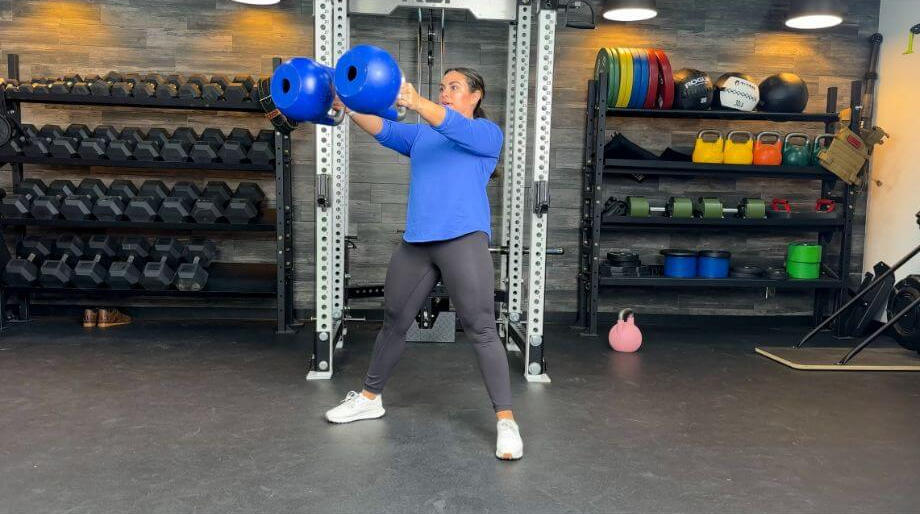
When it comes to the lower body, the kettlebell swing hits all the muscles in the posterior chain: Your glutes, hamstrings, calves, and erector spinae (the muscles that run vertically to your spine). A strong posterior chain can lead to better posture, improved athletic performance, and boosted explosiveness during dynamic movements.
Differences Between Dumbbells and Kettlebells
One key difference between dumbbells and kettlebells (naturally) is their shape. That has broader implications for the center of gravity and how the weight is distributed.
With dumbbells, the weight is evenly distributed on both sides of the handle, while a kettlebell’s weight sits below the handle. So, when you’re doing something like a lateral raise, you have to work harder to stabilize a kettlebell because you’re working against gravity, whereas it’s not quite as much of a challenge with dumbbells.
RELATED: Does Dumbbell Shape Actually Matter?
Another key difference is the handle itself. A dumbbell handle is only wide enough to fit one hand, whereas a kettlebell handle can oftentimes accommodate two (depending on your hand size). The kettlebell handle is better suited for things like swings, though you can do this exercise with a dumbbell, too—it might be a little more challenging, is all.
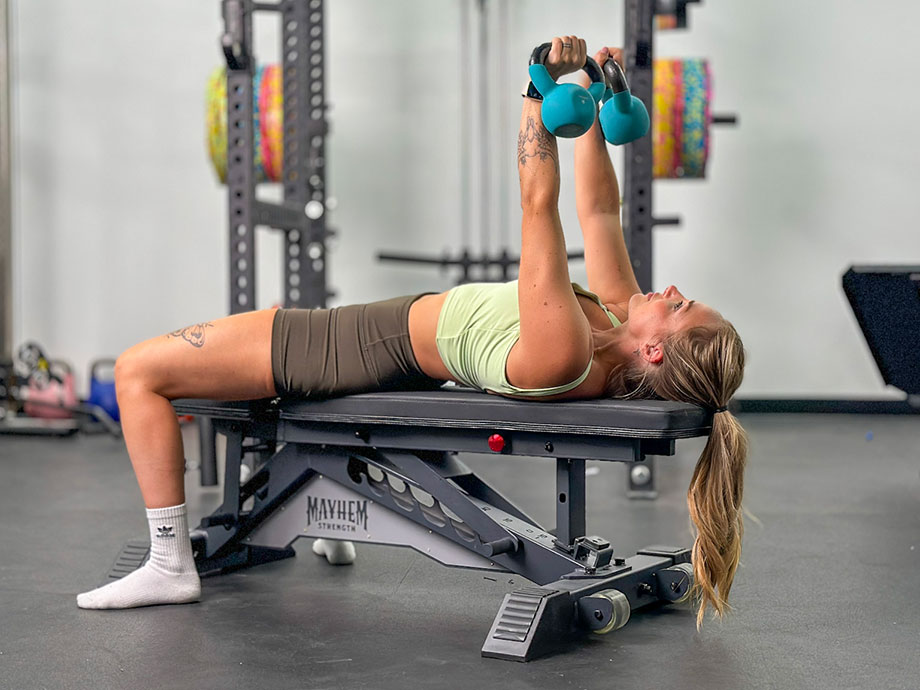
Weight increments can also vary between the two. To explain why, we need another quick history lesson. When kettlebells were first created in Russia, they were weighed using a unit of measurement called a “pood,” which is 16 kilograms (roughly 35 pounds).
The weight increments for kettlebells were established in conjunction with the pood, and kettlebell manufacturers still use them, even though the pood is no longer used in Russia or elsewhere. As a result, kettlebell increments commonly jump anywhere from 4 to 8 kilograms (9 to 18 pounds), whereas dumbbell increments tend to jump by 2.5 or 5 pounds.
It’s a little easier to progress with dumbbells because you can go from curling a 35-pound dumbbell to a 40-pound one quicker than you could working with a 53-pound kettlebell to a 62-pound one.
Kettlebells vs. Dumbbells: Which Are Better?
We’re still in the “it depends” camp when it comes to dumbbells vs. kettlebells. We polled the fitness team at Garage Gym Reviews to gauge their views, and they were fairly evenly split.
At the end of the day, there’s a ton you can do with both, and it’s going to ultimately depend on what you feel comfortable with. For example, our Senior Staff Writer, Amanda Capritto, CPT, CES, CNC, CF-L1, CSNC, is team kettlebell except when it comes to snatches (because wrist bruises are a thing).
Another Staff Writer, Matt Dustin, CSCS, PN1-NC, prefers dumbbells most of the time. He notes that while he enjoys using kettlebells for conditioning, his primary training goals are strength and hypertrophy. As such, he uses dumbbells far more often than kettlebells. “Kettlebells are a lot of fun, but for traditional strength exercises, I find it much easier to use dumbbells for my free-weight training,” Matt adds. “They don’t have an unusual shape that throws off my balance.”
Who Should Use Dumbbells
- People looking to strengthen the stabilizer muscles used in powerlifting
- Anyone who needs to work on isolation exercises
- Anyone new to weight training who needs to practice their form
Who Should Use Kettlebells
- Anyone who wants a quick workout that combines resistance training and cardio
- People who are recovering from injury or surgery
- Anyone who wants to improve their grip strength
Types of Dumbbells
The dumbbells you see in most commercial gyms aren’t the only types available today. Other variations possess their own advantages, depending on your training goals, so it’s important to know what’s on the market.
Fixed Dumbbells
These are the dumbbells most people are familiar with—a weight with a handle and two evenly weighted heads at each end. These can be made of steel, rubber, or chrome, among other compounds.
There are fixed-round dumbbells, where the weight on either end of the handle is circular, and fixed-hex dumbbells, which have a hexagonal head on either side. Round-shaped dumbbells can be great for most moves, but if you want to do floor work, you’ll want to find a hex dumbbell because those won’t roll away.
Adjustable Dumbbells
Adjustable dumbbells are popular among home gym owners for a simple reason: They replace multiple dumbbell pairs with a single piece of equipment.
When looking for an adjustable dumbbell, you want to see how heavy they go up to (some only get up to 50 pounds, while others can reach 150), the material they’re made of (some have plastic casing that can crack over time), and the ease of adjustment (some lower-quality models have a dial that gets stuck quite frequently).
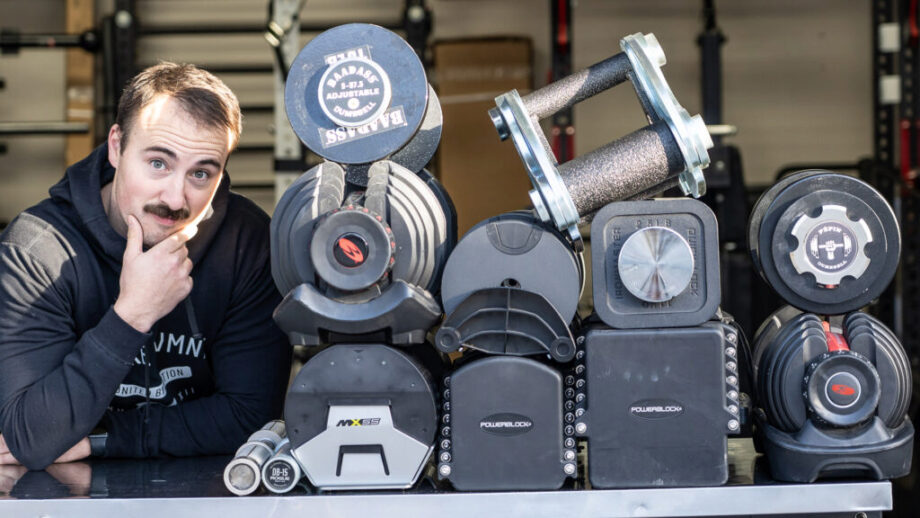
Loadable Dumbbells
This isn’t a dumbbell per se, but rather a small barbell with sleeves on either side where you can load Olympic or bumper plates to create your own dumbbell. They can be a great option for anyone who already owns plates because you can make them virtually as heavy as you want, depending on the sleeve size.
Types of Kettlebells
Just like dumbbells, you’re going to find a variety of kettlebells on the market, and it’s important to know what to look for.
Standard Kettlebell
These are your run-of-the-mill kettlebells. They’re usually made of iron or steel and are either bare or coated with another material—such as the Rogue e-coat kettlebell—to protect the weights (and your floors and walls in case of accidental slippage). The size of the kettlebell will change the heavier it gets, as will the kettlebell handle.
Competition Kettlebell
Kettlebells used in home and commercial gyms differ from those used in CrossFit or other sporting events. What’s the difference? A competition-style kettlebell always has a 5.5-inch base diameter, a 35-millimeter handle, and an 11.1-inch height, whereas a standard kettlebell from one brand or the next can vary in terms of handle thickness and overall proportions. If you’re a competitive strength athlete and looking to mimic your training setup to your in-competition performance, these can be excellent picks. That said, competition kettlebells are often more expensive given the further attention to detail across the uniform specs.
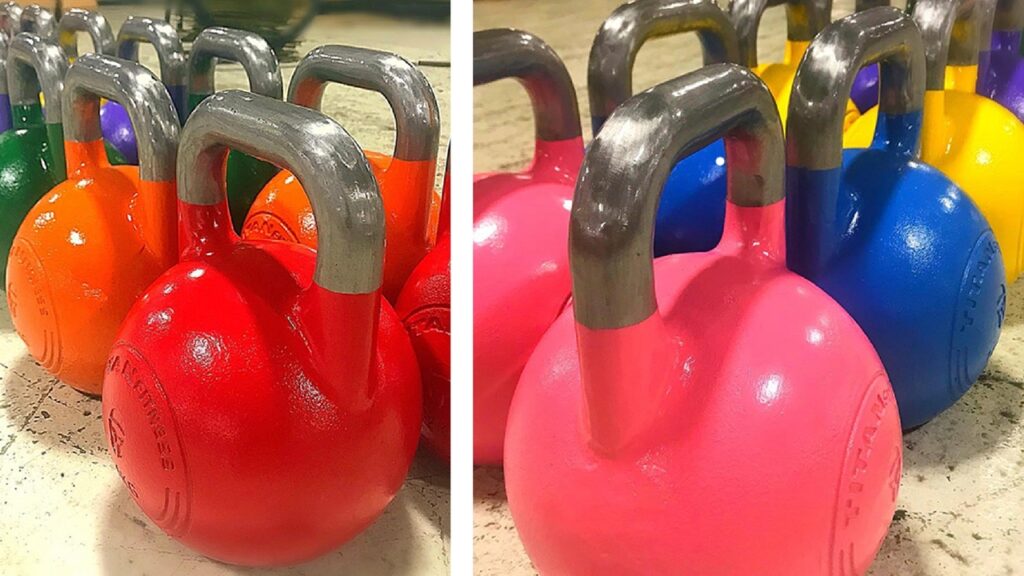
Adjustable Kettlebells
Like adjustable dumbbells, adjustable kettlebells can help home gym owners save on space by replacing several weights in one. One concern with popular adjustable kettlebells is that the handle is sometimes made of plastic, which makes it even harder to maintain a good grip, especially as you sweat during a grueling workout.
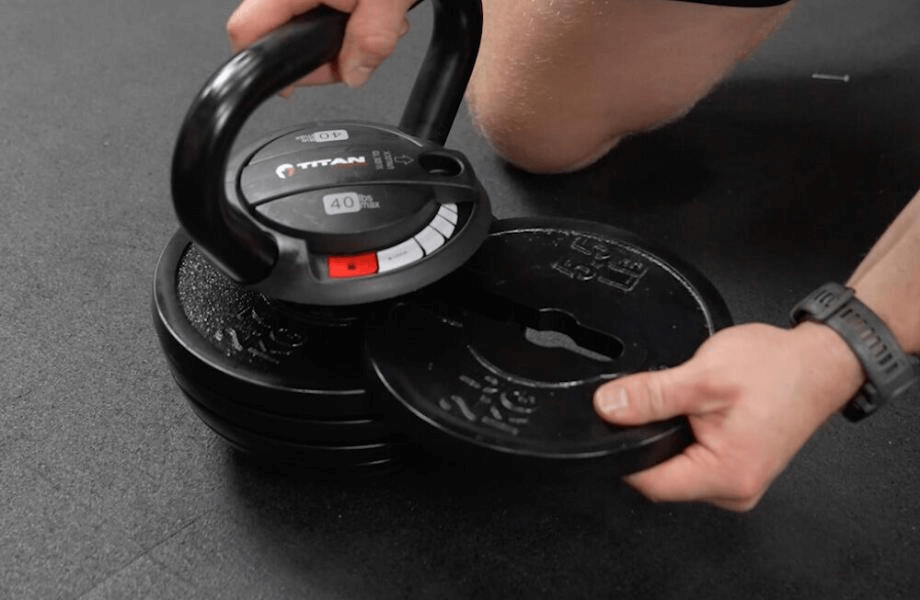
Changing the weight can also be time-consuming. Depending on the type of adjustable kettlebell you’re using, it may take you several minutes to adjust the weight, and you might need special tools.
Dumbbells vs. Kettlebells: Final Thoughts
Overall, we’re big fans of both dumbbells and kettlebells, and either would make an excellent addition to any home gym setup. Dumbbells can be easier to use and better suited to traditional strength-training exercises. Still, you may need to buy a full set if you’re not interested in adjustable dumbbells.
On the other hand, most people will need fewer kettlebells for an effective workout, but the movements can have a learning curve, especially traditional kettlebell movements like the Turkish get-up. They’re great for conditioning and full-body exercises, but aren’t quite as versatile as dumbbells.
In a perfect world, every gym would be equipped with a full set of both dumbbells and kettlebells. However, if you have to choose one, we think dumbbells are best for those focused on building strength and muscle, while kettlebells are better for those looking for a more functional, conditioning workout.
Dumbbells vs. Kettlebells FAQs
Are kettlebells just as good as dumbbells?
It’s not that one is necessarily better than the other, but there are some areas where a dumbbell might be a better pick than a kettlebell, and vice versa. Dumbbells are typically used for strength training, and kettlebells are usually used for metcon workouts. That doesn’t mean you can’t switch them up every now and then, though.
Are dumbbells easier than kettlebells?
Because the weight is more evenly dispersed in a dumbbell, beginners might find it easier to work with than a kettlebell, which has an offset center of gravity.
Can you substitute a dumbbell for a kettlebell?
Yes, but because the weight sits below the handle, some movements might be more challenging with a kettlebell than a dumbbell. Also, a kettlebell might be a little more challenging to hold onto because of its thicker handle.
References
- Farias, D. de A., Willardson, J. M., Paz, G. A., Bezerra, E. de S., & Miranda, H. (2017). Maximal Strength Performance and Muscle Activation for the Bench Press and Triceps Extension Exercises Adopting Dumbbell, Barbell, and Machine Modalities Over Multiple Sets. Journal of Strength and Conditioning Research, 31(7), 1879–1887. https://doi.org/10.1519/jsc.0000000000001651
- Saeterbakken, A. H., van den Tillaar, R., & Fimland, M. S. (2011). A comparison of muscle activity and 1-RM strength of three chest-press exercises with different stability requirements. Journal of Sports Sciences, 29(5), 533–538. https://doi.org/10.1080/02640414.2010.543916
- Fung, B. J., & Shore, S. L. (2010). Aerobic and Anaerobic Work During Kettlebell Exercise: A Pilot Study. Medicine & Science in Sports & Exercise, 42, 834. https://doi.org/10.1249/01.mss.0000386575.49791.be





